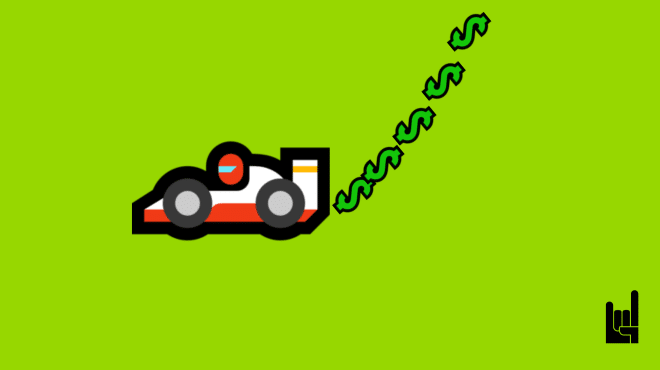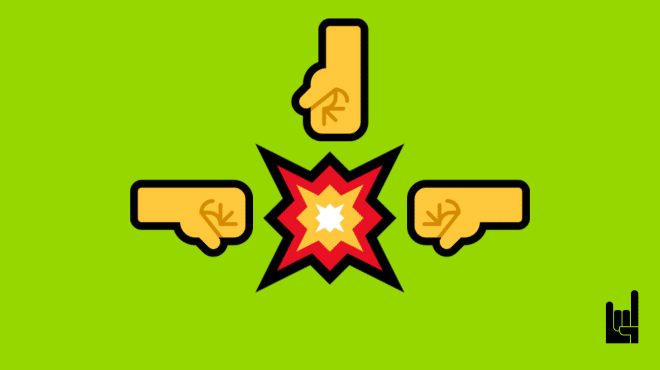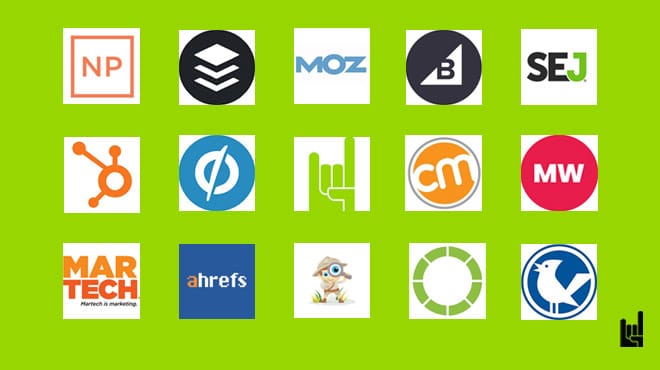Accordingly, a business in the SaaS industry is different from an eCommerce store, as well as one that offers B2B products or services from one that offers B2C ones.
One such important differentiation also happens with businesses that offer high-ticket products or services versus those that offer low-ticket ones.
Here’s what you need to know about about low and high ticket items and what you need to keep in mind when you are trying to market those.
What is a Low Ticket?
Low ticket items are products or services priced at a lower cost, which are typically regular purchases. They’re those everyday items that don’t require a significant investment from the customer. Think of things like books, small household gadgets, or affordable clothing.
The advantage of selling low ticket items lies in their appeal to a broader audience and the potential for frequent repeat purchases. Potentially, you can sell to a number of different people.
However, the challenge is the slim profit margins. In simple words, in order to make substantial profits, you will have to sell in large volumes. Additionally, the competition in the low ticket items is also bigger, demanding more creative and aggressive marketing strategies to stand out.
Marketing low ticket items successfully requires a deep understanding of your customer base and a strong emphasis on volume sales. This often involves strategies like:
- Utilizing digital marketing channels to reach a large audience efficiently.
- Employing persuasive copywriting that triggers impulse buys.
- Creating a sense of urgency, such as limited-time offers or flash sales.
While low ticket items can be lucrative, they require a business model capable of sustaining high volume sales with efficient cost management.
Examples of Low Ticket Items
Some common examples of B2C examples include:
- Fast food meals: Affordable, convenient, and satisfying, fast food represents a quintessential low ticket item with its widespread appeal.
- Paperback novels: Accessible and budget-friendly, paperback novels cater to avid readers without a hefty price tag.
- Basic cosmetic products: Everyday cosmetic items like drugstore makeup or skincare products are essential, affordable, and regularly purchased.
- Mobile phone cases: Inexpensive and functional, mobile phone cases are a common low ticket item offering protection and style for phones.
- Streaming service subscriptions: With a relatively low monthly cost, streaming services like Netflix or Spotify provide entertainment to a broad audience.
Some basic B2B examples include:
- Office supplies: Items like pens, notepads, and staplers are essential for daily office operations and are typically low-cost.
- Basic software subscriptions: Necessary but relatively for businesses, business, digital marketing, and growth hacking tools that come in handy.
- Small promotional items: Custom-branded items like pens, keychains, or mugs used for business promotion are affordable and ordered in bulk.
- Standard web hosting services: Basic hosting services for company websites offer necessary digital presence at a low cost.
- Essential digital marketing: Smaller-scale online ad campaigns or basic SEO services are low ticket investments for improving web visibility.
What is High Ticket?
High ticket items are characterized by their higher price points, often reflecting their premium quality, exclusivity, or specialized nature. These are items like luxury cars, high-end electronics, or bespoke services. High ticket items typically require a significant investment from the customer and are not purchased frequently.
The lucrative aspect of high ticket items lies in their substantial profit margins per sale. This reduces the pressure to make a high volume of sales to achieve profitability. However, selling high ticket items demands a deeper understanding of a niche market, and a sales strategy focused on building trust and demonstrating value.
Marketing strategies for high ticket items differ significantly from those for low ticket goods. Key approaches include:
- Offering personalized experiences and in-depth product demonstrations.
- Developing a strong brand narrative that resonates with a more exclusive clientele.
- Leveraging content marketing to establish thought leadership and trust.
High ticket items usually depend on building strong relationships and really knowing what the customer needs. This means you need to use a more careful and specific way to market.
💡 Read: Pricing Strategy for High-Ticket SaaS With Low Churn
Examples of High Ticket Items
Some typical B2C examples include:
- Luxury watches: Exemplifying craftsmanship and status, luxury watches like Rolex or Patek Philippe are classic high ticket items.
- Designer handbags: Brands like Louis Vuitton and Chanel offer high ticket handbags, sought after for their quality, brand prestige, and style.
- High-end home theater systems: Providing an immersive audio-visual experience, these systems are a significant investment for home entertainment enthusiasts.
- Professional-grade cameras: Targeted at photography professionals and enthusiasts, these cameras offer advanced features at a higher price.
- Gourmet kitchen appliances: High-end appliances aimed to consumers combine functionality with luxury.

These are some common B2B high ticket items:
- Enterprise software solutions: Comprehensive software systems like CRM or ERP solutions designed for large businesses are significant investments.
- Commercial real estate: Leasing or purchasing office space or warehouses represents a major financial commitment for businesses.
- Industrial machinery: Heavy machinery or manufacturing equipment are high ticket items necessary for production-focused businesses.
- Corporate training programs: Extensive, professionally-run training programs for staff development are often a substantial investment.
- High-end marketing campaigns: Large-scale, professionally produced marketing or advertising campaigns are significant investments.
Low Ticket vs High Ticket in a Nutshell
Here are the essential differences of low ticket and high ticket items.
| Criteria | Low Ticket Sales | High Ticket Sales |
|---|---|---|
| Price point | Less expensive, often impulse buys or everyday purchases | Expensive, often luxury or premium products/services |
| Sales volume | Relies on higher sales volume, low profit margin per item | Fewer items sold but higher profit margin per sale |
| Marketing strategy | Focuses on mass appeal, discounts, flash sales, broad advertising | Builds brand value, trust; involves personalized marketing |
| Decision making | Quick decision-making with minimal research, low perceived risk | Longer decision-making process with more research |
| Customer relationship | Less emphasis on long-term relationships, focus on immediate sale | Greater emphasis on long-term relationships and after-sales support |
Customer Behavior and Expectations
Customer behavior and expectations vary significantly between low and high ticket items, largely influenced by the nature of the investment they’re making.
When it comes to low ticket items, customers are generally fater in their decision-making. These purchases are often impulsive, driven by convenience or immediate need. The expectations for low ticket items are centered around functionality and basic quality, with less emphasis on long-term value or brand loyalty. Therefore, efficiency and accessibility should have a high priority in this case.
In contrast, high ticket items involve a much more deliberate decision-making process. Customers investing in high ticket items often conduct thorough research, seek recommendations, and weigh their options carefully. They expect high quality, exceptional service, and often, a status symbol that comes with premium products. For high ticket items, the customer journey is about building trust, and creating value – this is where customer experience management becomes essential.
Low Ticket vs High Ticket in a Nutshell
Here are the essential differences of low ticket and high ticket items.
Tailoring Marketing Channels for Low vs High Ticket Items
What does a high or low ticket mean for your digital marketing? How can the same marketing channels be used differently for each case?
Email marketing
Low ticket
For low ticket items, email marketing can be used for time-sensitive promotions, new arrivals, and flash sales, encouraging quick decisions and repeat purchases. For example, an online fashion retailer uses flash sales on seasonal clothing, encouraging quick purchases with limited-time discounts.
High ticket
In high ticket scenarios, email marketing should focus on nurturing leads over time, providing detailed information, testimonials, and personalized offers, slowly building to the ultimate purchase. For example, a luxury travel agency sends personalized, detailed itineraries and exclusive travel tips over several weeks to nurture high-value clients towards booking an exotic vacation.
Content marketing
Low ticket
Content marketing for low ticket items often involves blog posts, infographics, and short videos that are shareable and can quickly catch consumer interest. For example, a beauty brand creates short, engaging makeup tutorials and blog posts about beauty trends to capture the audience’s interest and drive sales of their cosmetic products.
High ticket
High ticket items benefit from in-depth content like detailed guides, whitepapers, and case studies that help build trust and authority over a longer decision-making process. For example, a software company offers comprehensive guides and in-depth case studies demonstrating the effectiveness and ROI of their high-end business solutions.

Social media marketing
Low ticket
In this case, engagement strategies are more about mass appeal and often involve wider social media campaigns, including viral challenges, extensive use of hashtags for broader reach, and partnering with influencers who have a large and diverse following. For example, a fast food brand encourages customers to share their own experiences or unique ways of eating their burgers using a specific hashtag.
High ticket
Social media marketing for high-ticket items often targets a more niche audience. The engagement strategies may include exclusive groups or communities, and collaborations with influencers or figures that resonate with the specific niche of the business. For example, a sales platform collaborates with influencers and thought leaders in the marketing and sales industry.
SEO
Low ticket
SEO for low ticket items is often more straightforward and transactional. It’s also more geared towards capturing users who are ready to make an immediate purchase. This includes optimizing for local SEO (if applicable), and site speed optimization. At the end of the day, SEO for low-ticket items is more about breadth, reaching a larger audience, and driving quick conversions.
High ticket
SEO strategies often align with a longer sales cycle. Content and keywords are designed to cater to different stages of the buyer’s journey, from awareness to consideration and decision. The focus is on nurturing leads and guiding potential buyers through a longer decision-making process. What’s more, building high-quality backlinks is crucial for high-ticket items, as link-building services come with a cost, and as a marketing investment, it has a higher ROI in high ticket items.
PPC
Low ticket
PPC campaigns for low ticket items often focus on a wide reach and high conversion rates, with ads designed to trigger quick purchases. For example, a stationery brand runs PPC ads targeting a broad audience, focusing on back-to-school seasons and office supplies, aiming for immediate clicks and purchases.
High Ticket
In high ticket marketing, PPC should be more targeted, focusing on niche audiences and keywords, and is often used more for brand awareness and lead generation rather than immediate sales. For example, a luxury real estate firm uses PPC to target specific, high-income demographics, focusing on long-tail keywords related to luxury homes and exclusive properties.
Conclusion
Now that you understand the nuances of marketing both low and high ticket items, the next step is to apply these insights to your business.
On the one hand, you will need a lot more customers or clients to make a low ticket item work but more expertise and tailor-made solutions for a high ticket one.
On the other hand, you will have to use digital marketing channels differently for each case.
Do you have a low or high ticket product or service and looking for some help?
Make sure to contact us and see how we can help you!

I write for GrowthRocks, one of the top growth hacking agencies. For some mysterious reason, I write on the internet yet I’m not a vegan, I don’t do yoga and I don’t drink smoothies.



